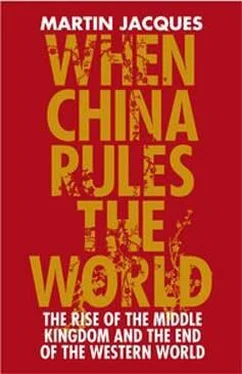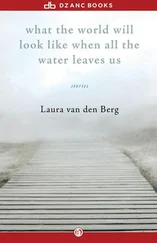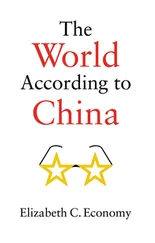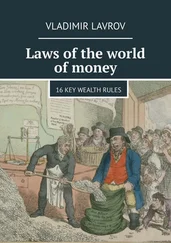Although the passage through modernity universally involves the transition from an agrarian to a service-based society via an industrial one, here we find another instance of European exceptionalism. European countries (sixteen in all) — with Britain, Belgium and Germany (in that order) at the head — are the only ones in the world that have been through a phase in which the relative size of industrial employment was larger than either agrarian or service employment. [91] [91] Göran Therborn, European Modernity and Beyond: The Trajectory of European Societe: 1945–2000 (London: Sage, 1995), pp. 24, 68–70.
In Britain, industrial employment reached its peak in 1911, when it accounted for 52.2 per cent of the total labour force: by way of contrast, the peak figure for the United States was 35.8 per cent in 1967 and for Japan 37.1 per cent in 1973. It was the sheer weight of industrial society that was to lend modern Europe many of its most distinctive characteristics, notably the centrality of class conflict and importance of trade unions. From a global perspective, a different and far more common path has been to move directly, in terms of employment, from a largely agrarian to a mainly service society, without a predominantly industrial phase, a route that has been followed by the United States, Canada, Japan and South Korea. [92] [92] Ibid., p. 68.
Although the pace of European industrialization was extremely rapid by the standards of previous economic change, it was slow compared with subsequent take-offs, the United States included, but especially East Asia. [93] [93] Maddison, The World Economy: Historical Statistics , p. 260.
The transformation of Western Europe was a long and protracted affair: it took Britain, after all, over two centuries to get where it is now. One consequence has been that the conflict between modernity and tradition has been relatively muted. The European city neatly illustrates this point: it is like a geological formation, one era of architecture existing cheek by jowl with another, a living museum embracing centuries of history, in contrast to North America, where cities were newly created, and East Asia, where little survives from the past in places like Tokyo, Seoul, Singapore, Shanghai, Kuala Lumpur and Hong Kong.
Another peculiar characteristic of Europe has been a succession of intra-continental conflicts or what might be described as internal wars. [94] [94] Therborn, European Modernity and Beyond , pp. 21-4.
Perhaps this was in part due to the relative lack of an external threat, which meant that the dominant fault lines were national or intra-European rather than to do with the outside, as was to be the case, in varying degrees, with colonized societies. The initial cause of these internal wars was religious conflict, starting in 1054 with the struggle between eastern and western Christianity followed, after 1517, by the division between Catholicism and Protestantism, which was to split the continent largely on a north-south axis. The persistence of these religious conflicts was to lend Europe a strongly doctrinal way of thinking which was initially expressed in theological and then later ideological forms. This was to be a far more pronounced characteristic than in any other continent: most of the major non-religious ‘isms’ — for example, liberalism, anarchism, socialism, communism, republicanism, monarchism, Protestantism and fascism — were European in origin. [95] [95] Not fundamentalism, however, which unusually originated in the United States.
From the 1540s to the 1690s Europe ’s internal wars were largely concerned with the consolidation of the early modern states. After the French Revolution, class assumed growing importance, and from the early nineteenth century until the late twentieth century it formed the overarching language of European politics and society in a way that was never to be the case anywhere else in the world. From 1792 through to around 1870 the establishment of nation-states was to play a fundamental role in Europe ’s internal wars. By the late nineteenth century these national rivalries were to be increasingly transposed on to the global stage, with the struggle over colonies, notably in Africa, contributing to the First World War. The Second World War started as a further instalment of Europe’s internal wars but rapidly spread to engulf most of the world, although its heartland remained in Europe. This penchant for internal war found global projection in the very European phenomenon of the Cold War, in which the fundamental divide was ideological, with the two great ‘isms’ of the time — capitalism and communism — ranged against each other. Ultimately, this appetite for internal war was to prove near-fatal for Europe: it fought itself to a standstill in the two world wars of the twentieth century and thereby rendered itself both exhausted and, in terms of global power, largely a spent force. [96] [96] Ibid., pp. 21-4, 68, 356.
Finally, the transformation of Europe has also been differentiated by individualism. The historian and anthropologist Alan Macfarlane has described individualism as ‘the view that society is constituted of autonomous, equal units, namely separate individuals, and that such individuals are more important, ultimately, than any larger constituent group.’ [97] [97] Alan Macfarlane, The Origins of English Individualism (Oxford: Blackwell, 1979), p. 196, quoted by Lal, Unintended Consequences , p. 75.
This is very different from East and South Asian cultures, where group rather than individual identity is central. Take the family, for example. The English family system had its origins in the thirteenth century and, courtesy of the Pilgrims, it also became the basis of the family system in North America. This individualistic system, with its emphasis on the nuclear family, stands in stark contrast to the traditional extended-household, arranged-marriage, kinship-based systems to be found in societies like China and India, whose values and distinctive characteristics persist to this day, notwithstanding urbanization and a dramatic fall in the size of the nuclear family. [98] [98] Göran Therborn, Between Sex and Power: Family in the World, 1900 - 2000 (London: Routledge, 2004), pp. 119-23; also pp. 108-12.
Thus, while marriage in the West is essentially a union of two individuals, in Chinese and Indian culture it involves the conjoining of two families.
Europe’s journey to and through modernity took highly specific and unique forms — the relative absence of an external threat, colonialism, the preponderance of industry, relatively slow growth, a pattern of intra-European conflict (or what I have termed ‘internal wars’), and individualism. We should not therefore be surprised that the characteristics of its modernity are also more distinctive than is often admitted. Since Europe has enjoyed such a huge influence on the rest of the world, however, distinguishing between the specific and the universal is often difficult and elusive. Europeans, unsurprisingly, have long believed that what they have achieved must be of universal application, by force if necessary. It is only with the rise of a range of new modernities that it is becoming possible to distinguish between what is universal and what is specific about the European experience.
At the beginning of the nineteenth century, GDP per head in Western Europe and on the North American seaboard was perhaps twice that of South Asia and roughly on a par with Japan and the southern and eastern seaboard of China. By 1900, income per head in Western Europe and the North American seaboard dwarfed that of China by a margin of at least ten times. China was to pay dearly for its inability to overcome the economic constraints that began to bear down on it during the late eighteenth century; in contrast, Europe luxuriated in its good fortune. The key to Europe ’s transformation was the Industrial Revolution. Britain ’s was well under way before 1800; by the second half of the nineteenth century, it had been joined by much of Western Europe. Previously economic growth was of a glacial speed; now compound rates of growth ensured that Western Europe far outdistanced every other part of the world, the United States being the most important exception. Apart from North America, the old white settler colonies [99] [99] The old white settler colonies enjoyed a very different relationship with Britain to that of the non-white colonies, and this was reflected in their far greater economic prosperity; Angus Maddison, The World Economy: A Millennial Perspective (Paris: OECD, 2006), pp. 184-5.
and Japan after 1868, Europe enjoyed a more or less total monopoly of industrialization during the nineteenth century, a scenario with profound consequences for everyone else.
Читать дальше












